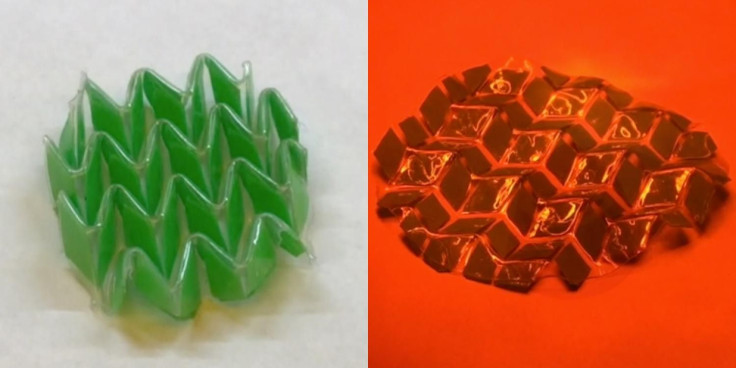Unique Shape-Shifting Material Reacting Under Heat, Light, Developed At Colorado University

As researchers across the globe continue to improve robotic capabilities, engineers at the University of Colorado Boulder have come up with a unique invention – a material that readily reacts to light, heat to take a different shape.
Shape-shifting materials have been around for years, but all those objects relied on some sort of physical mechanism or power source to take a desired shape, texture, or size. More importantly, these materials also struggled to return back to the original form after taking the given, pre-programmed shape.
This is where the new material, which seamlessly switches back and forth between complex shapes and uses only heat and light as the trigger, comes in.
The idea, as the described by the team, revolves around liquid crystal elastomers (LCEs) or the hybrid material that combines liquid crystal orientational order with the elastic properties of a polymer network component.
LCEs are commonly used in the displays of modern televisions, but in this case, the group leveraged the distinct molecular arrangement of the material, which makes it susceptible to be influenced by heat as well as light.
Essentially, the LCE in question was integrated with a light-sensitive trigger, which acted as a switch under the impact of a certain wavelength of light and helped the material attain a desired molecular alignment or shape. The trigger went inactive soon after morphing material.
However, it activated again under the impact of heat and relaxed the material back to the original position. The team even shared a video demonstrating how the material shrinks under the impact of light and reverses the whole process when heated at temperatures going up to 200 degrees Fahrenheit.
Shape-shifting? It's more than just science fiction! 🔬
— CU Boulder Engineering 🦬 (@CUEngineering) August 24, 2018
A new material developed by @CUBoulder engineers can transform the below material into complex, pre-programmed shapes.
Learn about its potential uses: https://t.co/GxsnK6sCOR pic.twitter.com/I7Ya4amRvm
“We view this as an elegant foundational system for transforming an object’s properties,” Matthew McBride, lead author of the new study and a post-doctoral researcher in CHBE, said in a statement. “We plan to continue optimizing and exploring the possibilities of this technology.”
In fact, the researchers believe the material, with further advancements in the future, could be the key to fields like robotics and medicine.
“The ability to form materials that can repeatedly oscillate back and forth between two independent shapes by exposing them to light will open up a wide range of new applications and approaches to areas such as additive manufacturing, robotics, and biomaterials,” Christopher Bowman, senior author of the new study, added.
The uses of bots and medical devices developed from shape-shifting materials go far beyond imagination. For instance, shape-shifter robots could be used to shrink down and enter places humans or other machines cannot reach. They could carry out effective rescue and assistance operations.
The study titled, “A readily programmable, fully reversible shape-switching material,” was published Aug. 24 in the journal Science Advances.
© Copyright IBTimes 2024. All rights reserved.





















